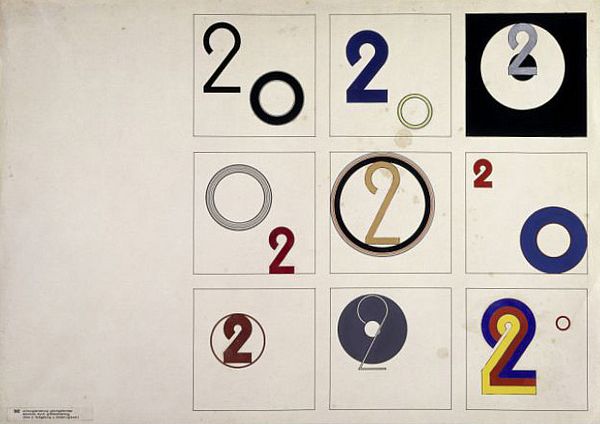Lettering Design
1925–1932
From 1925 Joost Schmidt instructed preliminary course students in typographic design. From 1929 he also taught nude and figure drawing for students in later semesters.

Headline
Joost Schmidt received his degree in painting in 1914 at the Großherzoglich-Sächsische Kunstgewerbeschule (Grand Ducal Saxonian school of arts and crafts) in Weimar. He then continued his studies from 1919 to 1925 at the Staatliches Bauhaus in Weimar in the preliminary course taught by Johannes Itten. In 1922, he passed his journeyman’s examination in wood sculpture, along with Itten and Schlemmer. He successfully participated in the poster competition for the Bauhaus exhibition of 1923 and worked intensively on typography projects from 1924.
Within the scope of the preliminary course at the Bauhaus Dessau (1925–1932), all students were required to attend two semesters of the lettering design course taught by Joost Schmidt. Here, Schmidt explored the structure of letters – circle, square and rectangle – and their flexibility in terms of shape and size as well as the treatment of colour and surface. In addition, he had his students examine aspects of advertising such as language, visual effect, psychology and economy. With his teaching, Joost Schmidt strove for the comprehensive reform of lettering, which was to be validated and standardised internationally.

Headline
As head of the sculpture workshop and the advertising department, Schmidt integrated his increasingly extensive teaching programme into the activities of the workshops. This was his way of countering the tendency which became apparent in the late 1920s, whereby teaching and practical work in the workshops drifted apart. He eventually also included life drawing and figure drawing in his curriculum for the higher semesters. In his colour theory, he concentrated – by contrast to his teacher Itten – on the most recent scientific findings on colour. Like László Moholy-Nagy and Josef Albers, Schmidt’s goal of teaching was the user-friendly functionality and technical standardisation of objects.
